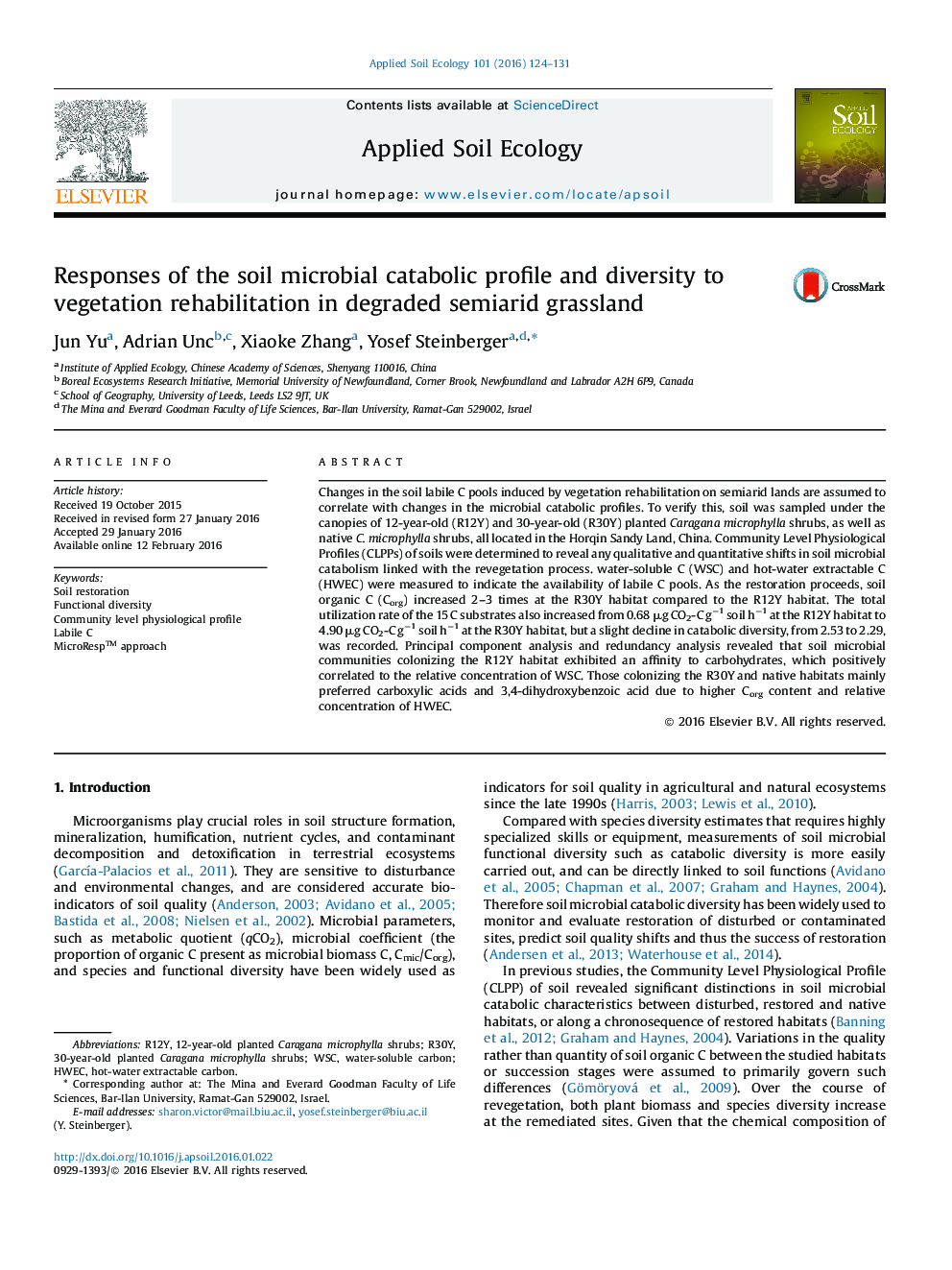| کد مقاله | کد نشریه | سال انتشار | مقاله انگلیسی | نسخه تمام متن |
|---|---|---|---|---|
| 6297702 | 1617782 | 2016 | 8 صفحه PDF | دانلود رایگان |
- Soil microbial catabolic diversity is used to monitor restoration of disturbed sites.
- Catabolic diversity increases during vegetation rehabilitation as plant cover increases.
- Microbial communities respond to changes in labile carbon pools during rehabilitation.
Changes in the soil labile C pools induced by vegetation rehabilitation on semiarid lands are assumed to correlate with changes in the microbial catabolic profiles. To verify this, soil was sampled under the canopies of 12-year-old (R12Y) and 30-year-old (R30Y) planted Caragana microphylla shrubs, as well as native C. microphylla shrubs, all located in the Horqin Sandy Land, China. Community Level Physiological Profiles (CLPPs) of soils were determined to reveal any qualitative and quantitative shifts in soil microbial catabolism linked with the revegetation process. water-soluble C (WSC) and hot-water extractable C (HWEC) were measured to indicate the availability of labile C pools. As the restoration proceeds, soil organic C (Corg) increased 2-3 times at the R30Y habitat compared to the R12Y habitat. The total utilization rate of the 15 C substrates also increased from 0.68 μg CO2-C gâ1 soil hâ1 at the R12Y habitat to 4.90 μg CO2-C gâ1 soil hâ1 at the R30Y habitat, but a slight decline in catabolic diversity, from 2.53 to 2.29, was recorded. Principal component analysis and redundancy analysis revealed that soil microbial communities colonizing the R12Y habitat exhibited an affinity to carbohydrates, which positively correlated to the relative concentration of WSC. Those colonizing the R30Y and native habitats mainly preferred carboxylic acids and 3,4-dihydroxybenzoic acid due to higher Corg content and relative concentration of HWEC.
Journal: Applied Soil Ecology - Volume 101, May 2016, Pages 124-131
